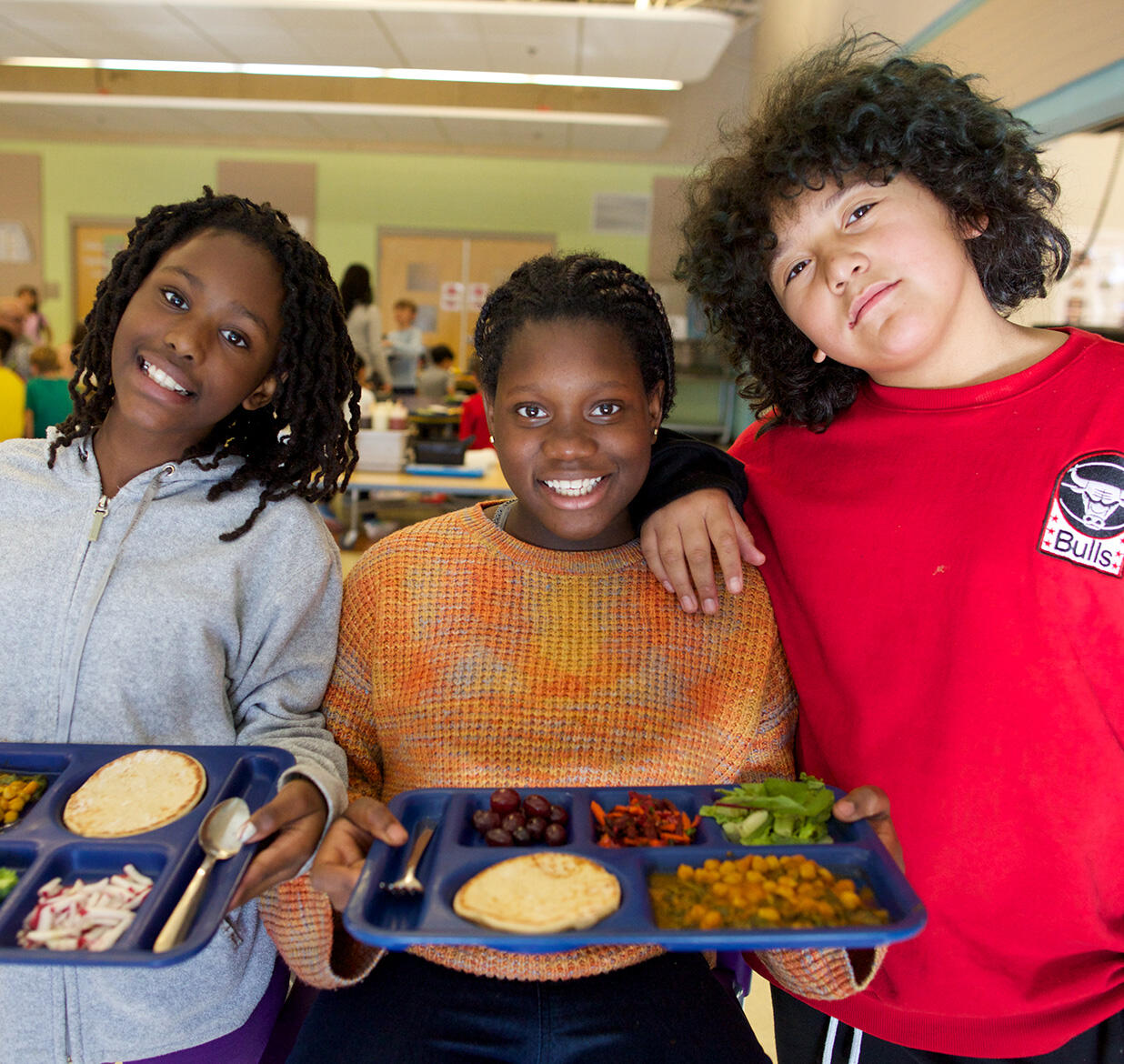
Healthy School Meals for All: A Bipartisan Path Forward
October 02, 2024 | By Mara Fleishman
Improving school food quality and nutrition are issues that can unite lawmakers across the aisle.
In the thick of another contentious election cycle, school food has become a surprisingly divisive topic even though it aligns with core values championed by both major political parties: ensuring the well-being of our youth and our country.
One hotly debated issue of late is universal free school meals. Democrats have generally supported this policy, pointing to its academic and social benefits. Republicans, on the other hand, tend to oppose such universal programs, citing concerns about federal overreach and taxpayer burden.
Despite these differing viewpoints surrounding fiscal priorities, the health of our children and the strength of our communities shouldn’t be a partisan issue. And that’s not just my perspective; it’s what most Americans want. According to a 2024 research report by GENYOUth, 60% of U.S. adults believe that food insecurity among U.S. children, defined as the limited or uncertain availability of nutritionally adequate and safe foods, should be a national priority.
Voters want our politicians to focus on food insecurity, and our politicians want to debate universal access to school meals. Is there an area where we can find common ground to move change forward? Yes — let’s start with getting back to basics: What are our kids eating?
According to a 2024 research report by GENYOUth, 60% of U.S. adults believe that food insecurity among U.S. children, defined as the limited or uncertain availability of nutritionally adequate and safe foods, should be a national priority.
Improving school meal quality means doing what we all strive to do in our own kitchens: cooking food from scratch as much as possible and not only reheating pre-packaged, highly processed foods.
The case for more scratch-cooked, whole-ingredient school food is compelling. Studies have linked ultra-processed foods to increased risks of obesity, type two diabetes, and certain cancers. A 2019 National Institutes of Health study found that people consumed about 500 more calories per day when eating ultra-processed foods compared to whole foods.
These statistics are alarming. With more than 28 million and 14 million children participating in the National School Lunch and Breakfast Program respectively — many of whom consume up to half their daily calories at school — the quality of these meals is essential to the health and success of our future leaders.
The shift to scratch cooking, which does require some support for school food programs with decades-old equipment and staffing issues, creates a cascade of benefits that both Democrats and Republicans can appreciate. This is an investment worth making:
- Local economic impact: Scratch cooking requires purchasing ingredients, often from local sources. This investment in our local farms and food producers strengthens regional economies — a goal championed by both parties.
- Workforce development: Cooking meals from scratch requires more skilled labor than reheating processed foods. This upskills food service workers, increasing their job opportunities and connecting them to viable career paths in culinary arts and nutrition.
- Improved student outcomes: Multiple studies have shown a correlation between improved nutrition and academic achievement. A 2020 review in the journal Nutrients found that healthier school meals were associated with better test scores, particularly in math and language arts.
The issue is gaining support across the country as states take bold steps to support scratch cooking and local sourcing in schools, boosting student health and economies. New Mexico recently passed a bill supporting Healthy School Meals for All, which includes provisions to increase scratch cooking in schools. Michigan now provides additional reimbursements for locally procured ingredients in school meals. New York offers up to $0.25 per meal in additional reimbursement for schools that purchase at least 30% of their ingredients from in-state farms and food producers. Vermont has set an ambitious goal to source 50% of school food from local or regional sources by 2025, backed by farm-to-school grants. And California legislators on both sides of the aisle passed a landmark bill (CA AB2316) banning six artificial dyes connected to neurobehavioral problems from food served in public schools. The bill now advances to the governor.
At the federal level, we’ve seen encouraging bipartisan action to support scratch cooking and childhood health. A recent bill reintroduced by Democratic Representative Jahana Hayes and Republican Representative Brian Fitzpatrick, which previously passed the House, aims to support scratch cooking in schools nationwide. Last year, Republican Senator Marco Rubio, along with Democratic Senator Cory Booker, introduced the Fresh Fruits and Vegetables Nutrition Act to enhance access to nutritious foods for low-income children. These bipartisan successes demonstrate that improving school food quality and nutrition are issues that can unite lawmakers across the aisle.
These bipartisan successes demonstrate that improving school food quality and nutrition are issues that can unite lawmakers across the aisle.
Innovative solutions are also emerging to support this transition in the workforce. New apprenticeship programs for school food workers have garnered bipartisan support. These programs provide comprehensive training in scratch cooking, nutrition, and food service management. Such apprenticeships not only improve the quality of school meals but also create career advancement opportunities in an often-overlooked sector.
The emphasis on apprenticeships and workforce development in school nutrition aligns with broader bipartisan efforts to strengthen vocational training and create alternative pathways to successful careers. Both Republicans and Democrats have historically supported apprenticeship programs as a means to build a skilled workforce and boost economic growth. Why not invest in America’s largest restaurant chain — the school cafeteria?
Improving school meals isn’t just a policy choice — it’s a critical step forward that transcends party divides. While Republicans and Democrats may disagree on how to fund school meals, we can all agree that when we do provide these meals, they should be of the highest quality possible. By focusing on this common ground and supporting innovative programs across the country, we can make meaningful progress in an area that impacts millions of children daily.
The vitality of our local economies, the future of our workforce, and the health of our children depend on the actions we take today. Let’s make healthy school meals and robust workforce development in school nutrition a bipartisan priority. Investing in our local communities is a win that every politician can point to.







